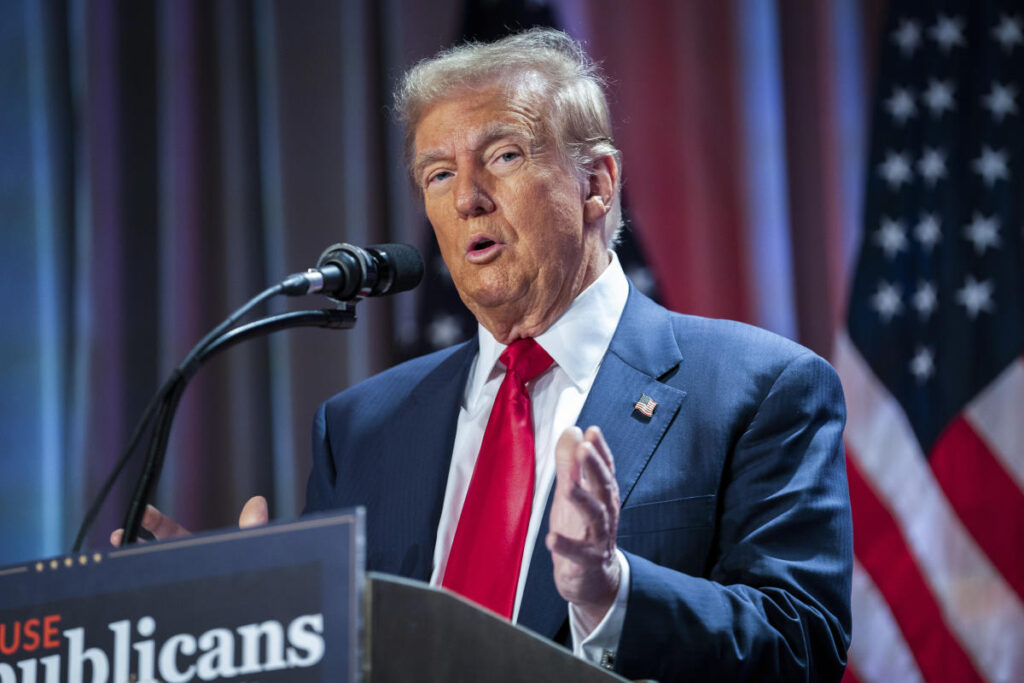The U.S. economy is currently demonstrating robust health, with projections indicating a favorable outlook for growth into 2025. Economists at Bank of America, led by research analyst Claudio Irigoyen, estimate an annualized growth rate of 2.4% for the U.S. economy, surpassing the existing consensus forecast of 2% growth as per Bloomberg estimates. This optimistic projection is notable given prevailing uncertainties related to the economic policies that President-elect Donald Trump might implement. His campaign promises, which include introducing tariffs on imports, instituting tax cuts for corporations, and placing restrictions on immigration, are viewed as potentially inflationary. Despite these uncertainties, Bank of America believes that the U.S. is fundamentally prepared to handle the challenges that may arise, emphasizing its resilience in the face of fiscal and trade policy transformations under the incoming administration.
One of the key concerns surrounding Trump’s proposals is their potential impact on economic growth and the federal deficit. The introduction of higher interest rates, coupled with the anticipated hawkish trade policies, could strengthen the U.S. dollar, which may have global ramifications. Bank of America highlights that these dynamics could serve as a significant shock not only to the U.S. economy but also to international financial systems. However, they underscore that the U.S. economy is in a stronger position to manage potential disruptions compared to other developed nations. Aditya Bhave, a senior economist at Bank of America, points out that while the U.S. imports a wide variety of goods, it does not import recessions; rather, it tends to export economic downturns, reinforcing its preparedness for any economic shocks prompted by shifts in trade policy.
A critical factor underpinning this optimism is the current strength of the U.S. economy, which has shown remarkable growth trends over the past couple of years. Consumer confidence has reached its highest point in 18 months, economic output has been robust since April 2022, retail sales have exceeded expectations, and the unemployment rate remains around a low 4%. Additionally, inflation, although it has experienced fluctuations, has moderated back towards the targeted 2%. Bhave suggests that the U.S. is entering into potential trade policy changes on substantially solid ground compared to struggling economies in Europe and China, a reality that may not go unnoticed by the upcoming administration.
One prominent aspect of Trump’s campaign rhetoric has been his commitment to imposing tariffs, particularly a blanket tariff of at least 10% on all trading partners and an ambitious 60% tariff on imports from China. If other nations respond with retaliatory tariffs, there could be a protracted “tit-for-tat” trade war, potentially resulting in sustained inflationary pressure. However, Bank of America’s economists are cautiously optimistic that such a scenario can be avoided, projecting that the actual tariffs enacted will likely be less severe than those proposed during the campaign. Consequently, Bhave argues that while tariffs can disrupt capital expenditures and exports, the overall structure of U.S. trade—importing more than it exports—means that the adverse impacts of tariffs would disproportionately affect trading partners.
In summary, the prospects for the U.S. economy appear favorable despite the uncertainties associated with potential trade policies and other initiatives under President-elect Trump. While concerns about tariffs exist, Bank of America remains hopeful that an all-out trade war can be averted and that the actual policy implementations will be less stringent than anticipated. The firm emphasizes that the U.S. economy’s resiliency presents a valuable cushion against the turbulence that may ensue due to changing economic policies. Furthermore, recent economic indicators paint a picture of strength, positioning the U.S. favorably as it navigates the complexities of international trade relations in the years to come.
As the incoming administration prepares to implement its economic agenda, the interaction between domestic growth dynamics and global economic conditions will be crucial. Economists and market analysts will be closely monitoring how these policies affect both the U.S. economy and its global partners. The current outlook suggests that while potential risks remain, the United States is equipped with the necessary structural strengths to withstand challenges, and the scenario poses substantial interest not only domestically but also among its trading partners. The responses from other countries to potential tariff implementations will likely shape the future landscape of global trade, necessitating vigilant observation of market and economic indicators as we transition into the new governance era.

